














The High Holiday season we’re about to enter is like none other. We’ll begin with Erev Rosh Hashanah on Wednesday, Oct. 2 and conclude with Havdalah immediately following Yom Kippur’s last prayers on Saturday, Oct. 12. That’s normal (though some might say “late”). It’s what takes place in between that makes this season unique – we’ll observe the first anniversary of October 7th, a day of horror for Israelis and Jews around the world.
These are all moments to heed the sound of the shofar’s blast – its metaphorical call to wake up, to come together. This is the time to attend our congregations’ High Holiday services and festive meals and to show up in solidarity at the Sandler Family Campus on Monday, Oct. 7 to commemorate that horrific day, remember the fallen, pray for those still in harm’s way, and ultimately, for peace. (Information on the Oct. 7 event is on page 12. A listing of area High Holiday services and events was printed in the Sept. 16 issue of Jewish News and is available at JewishNewsVa.org.)
As with all Jewish holidays, the High Holidays have myriad components, and so, within this Yom Kippur section our articles have suggestions on what to serve at a Break Fast, how interfaith families can make the holidays work, how a group of local women gathered to bake to make the holidays special for those who are alone, and more. Plus, starting on the next page, Jewish News asked a few who fast their tips for getting through the day.
However or wherever you choose to spend the High Holiday season, all of us at Jewish News wish you a year of good health, peace, and opportunities to gather with family and community.
G’mar chatima tova – May you be sealed in the Book of Life,

Terri Denison Editor
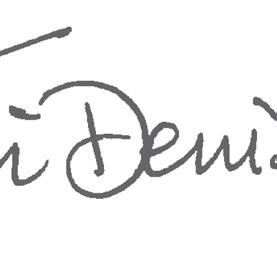

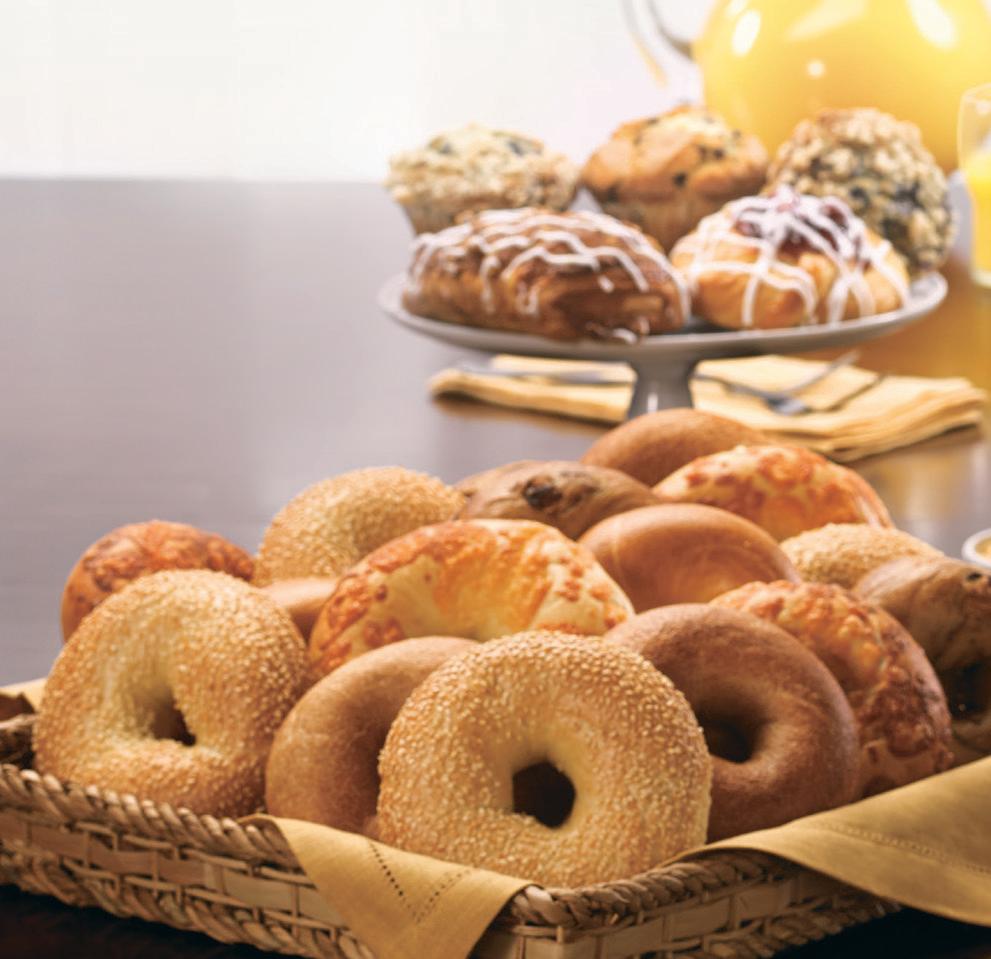




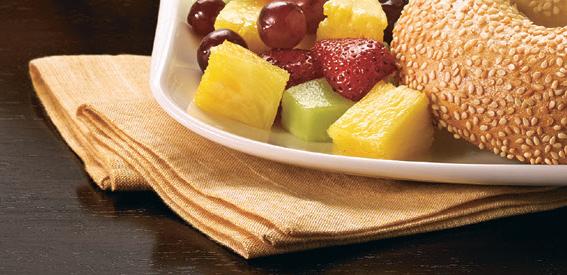



“Fasting on Yom Kippur offers a rare opportunity to mindfully focus without the distractions of daily life.”


“Mentally, it triggers my biorhythms, so when fasting finally comes, I’m ready.”



“I smell it (a lemon) when I’m hungry, and it does make me feel better, but I like it because it reminds me of my grandmother.”
Fasting for 25 hours is no easy feat. Hunger pangs, headaches, and general malaise typically set-in by midday, after the last morsel of food went down at dinner the previous night. Jews who observe the Yom Kippur fast cope in different ways, as they create a physical discomfort for themselves to open a mindfulness for forgiveness.
Rabbi Shmuel Katz, a congregant at B’nai Israel Congregation, sells and distributes non-prescription FastAid, a delayed time release pill containing ibuprofen, caffeine, acetaminophen, and electrolytes to help stave off the physiological effects of fasting. A project by Toronto Kollel, FastAid has been around since 1998 and has distributors throughout the United States and Canada. On its website, the Toronto Kollel describes the pills as “halachically permissible by the Roshei HaKollel, Rav Shlomo Miller, and Rav Yaakov Hirschman who note that ‘headaches and nausea are not one of the five Eenuyim we need suffer on Tisha B’Av or Yom Kippur, which means the formulation can be taken with a clear conscience.’”
One pill is taken orally before the fast begins, but its slow time release occurs 12 hours later. “Once the pills begin working,

they effectively release and keep headaches and nausea at bay till the conclusion of the fast,” according to promotional material.
“People who take it say it works,” says Katz. For the Tisha B’Av fast in August, he was approached by 20 to 30 people looking to purchase the fasting pills.
For Deb Segaloff, her Yom Kippur tradition begins with a memory from her childhood: piercing a lemon with cloves with her grandmother, Lottie Mantinband Bernstein. “I smell it when I’m hungry, and it does make me feel better, but I like it because it reminds me of my grandmother,” Segaloff says. “You can imagine my surprise, when, as a young wife, I saw Miriam Ruberg and Ruthie Kroskin with their own lemon and cloves at Beth El on Yom Kippur!”

Rabbi Shmuel Katz
“People who take it say it works.” Rabbi Shmuel Katz
Unlike other Jewish holidays, many congregants choose to spend the entire day at synagogue. Sharon Cohen, a member of Ohef Sholom Temple, attends study sessions, reads, or takes a walk between services. “Fasting on Yom Kippur offers a rare opportunity to mindfully focus without the distractions of daily life,” she says.
Gary Baum takes a similar approach. Growing up in England, his family stayed in synagogue all day. Upon arriving in Norfolk, he befriended Paul Peck and Adam

With rising tensions in the Middle East and the accompanying threat to the health and safety of the Israeli people, we can’t ensure that this Rosh HaShanah will usher in a peaceful year. But with your generous support, Magen David Adom will be prepared — no matter what 5785 brings.
Donate at afmda.org/give or call 866.632.2763.
Foleck at Congregation Beth El, and the three men created their own tradition. “We walk over to visit with Paul’s father, Stanley Peck, at the Chabad house,” and depart with teachings of Torah to consider from Rabbi Margolin and Rabbi Brashevitsky. “As I think about it, I can’t recall a year when we were prevented from walking over due to inclement weather.” Divine intervention, maybe?
A congregant of Temple Lev Tikvah, David Yasemsky prepares for the Yom Kippur fast starting with the Selichot service. In getting ready for the High Holidays, he spends five to 10 minutes each day in thought and prayer. This sets the tone for the upcoming holidays and gets him ready in spirit. “Mentally, it triggers my biorhythms, so when fasting finally comes, I’m ready,” he says.


As Yom Kippur rounds the corner this year, Jewish News wishes all readers an easy fast and gmar tov.
In getting ready for the High Holidays, David Yasemsky spends five to 10 minutes each day after Selichot in thought and prayer. This sets the tone for the upcoming holidays and gets him ready in spirit.


be the year to veer away from a discussion of politics.
Instead, consider exploring a topic that is often overlooked, but is incredibly important –philanthropy. What better time to delve into the subject than over the holidays? A few simple questions will get the conversation going.
21/64, a nonprofit organization “providing multigenerational advising, facilitation and training for next generation engagement, especially within family philanthropy and other family enterprises,” has developed a series of questions to start philanthropy-focused conversations in the form of a deck of cards, Exploring Giving © 2018 21/64, Inc. Each family member can pick a question to discuss. More information may be found at: https://2164.net. Get talking!
For more information about how the community is engaging families in these conversations, contact Amy Zelenka at United Jewish Federation of Tidewater at azelenka@ujft.org or Amy Weinstein at Tidewater Jewish Foundation at aweinstein@tjfva.org.

This New Year, answer the call by making a legacy gift, ensuring a strong Jewish community for future generations.


As you reflect on the past and plan for the future, consider the impact you can have today by helping sustain Tidewater Jewish organizations. Through Life & Legacy Plus, your gift of any size can be customized to fit your dreams, lifestyle, family, and finances. Connect with us or one of our community partners for a commitment-free conversation and explore how you can create a meaningful legacy today.
LIFE & LEGACY COMMUNITY PARTNERS IN TIDEWATER
• B’nai Israel Congregation
• KBH Kempsville Conservative Synagogue
• Beth Sholom Village
• Ohef Sholom Temple
• Chabad of Tidewater

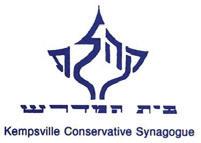


• Simon Family JCC
• Congregation Beth El
• Temple Emanuel
• Jewish Family Service of Tidewater
• United Jewish Federation of Tidewater




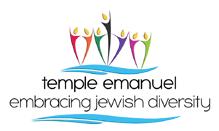

Oliszewski and Anna Fox Burnette
Every year, the Jewish Family Service Food Pantry—a cornerstone of Jewish Tidewater’s support system—assembles Rosh Hashanah care packages for more
than 120 seniors, many of whom live in nursing homes or are homebound. These holiday bags, filled with essentials such as apples, honey, and round challah rolls, are a reminder that preserving seniors’



dignity and delivering these holiday items to them ensures they are able to celebrate this time of year, too.
Rosh Hashanah is a time not only for reflection but also for tzedakah. This year, women from across the area came together to contribute something particularly meaningful: homemade challah rolls. These rolls represent more than just a holiday staple—they symbolize the care, tradition, and compassion that define Jewish values.
On Sunday, September 22, nearly 30 women gathered to bake more than 250 challah rolls for the Rosh Hashanah bags. The initiative, which began in the early hours of the morning with dough making, was filled with the sound of laughter,






shared stories, and the warmth of bonds being strengthened. Women from all corners of the community came together, united by a shared mission to meet new people and give back to neighbors.
This event was able to take place because of established partnerships from across the community. Gratitude is extended to everyone who contributed their time and effort to make this event a success – from the organizers to the volunteers who helped bake the challah and those who packed and delivered the Rosh Hashanah bags. Temple Emanuel allowed the women the use of its space, Emily Krouse from the Food Pantry provided the opportunity to contribute, and Shikma Rubin and Gabi Kocerha provided the planning support. Everyone’s efforts were instrumental in making this happen. The group hopes that this type of event can be replicated and expanded in future years.
Those who are interested in contributing to the JFS Food Pantry, have any questions, or are interested in volunteering, should contact Emily Krouse at ekrouse@ jfshamptonroads.org or 757-321-2227.
Those who are looking for other ways to support the growing “Jewish Women's Circle” or want to meet other women and contribute to the community, contact Anna Fox at annafoxburnette@gmail.com.
L’Shana Tova—wishing everyone a sweet New Year!

Chaya Rappoport
This story originally appeared on The Nosher.
My family breaks our Yom Kippur fast on bagels and lox. It’s classic, delicious, and simple. But by turning it into a fish board — complete with colorful vegetables, crackers, and cheeses — this simple concept becomes an enticing meal. I love it for its visual appeal and for how easy it is to put together.
Follow my step-by-step guide to building a smoked fish board to take your break fast up a notch.
This is the main event, so make sure you have something for everyone. Lox is a must, a mild whitefi sh spread is great with crackers, and caviar or salmon roe add a salty pop of fl avor to bagels. Salmon jerky is a fun extra for snacking on, and, of course, no Jewish fi sh board is complete without herring. If you’re into small, oily fi sh (and I am!) add a tin of sardines or anchovies — they’re delicious on buttered bread. (These are great, plus their packaging is beautiful
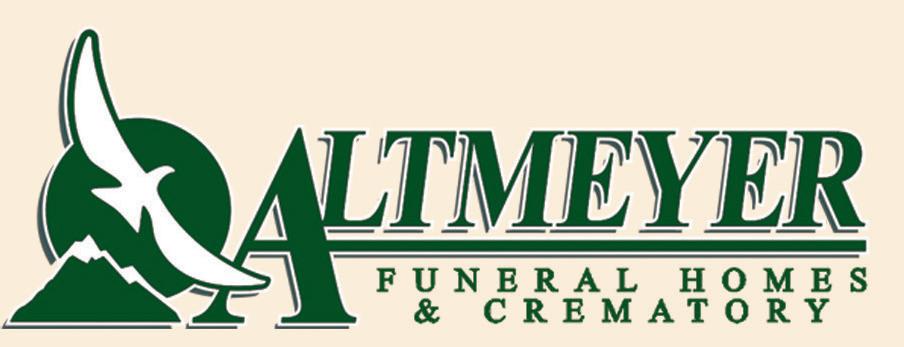





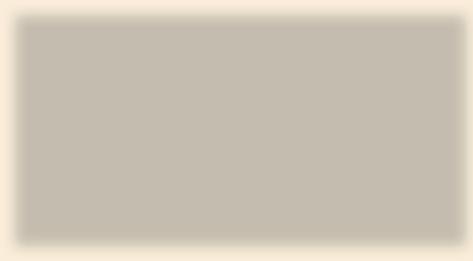
• Family owned and operated since 1917
• Affordable services to fit any budget
• Advance funeral planning
• Professional, experienced, caring staff




enough to display on the board.)
Lighten things up with some veggies — little cornichon pickles for crunch, sliced red onion for freshness and tang, and olives and capers for a briny hit. Refreshing cucumbers and sliced tomatoes add heft to a bagel sandwich, and lemon wedges add zing and color, as do fresh herbs like dill.
While fi sh is the focus, dairy elements are necessary to round things out. Keep it simple: a whipped cream cheese (make sure it’s room temperature so it’s spreadable) for the bagel lovers and sour cream to serve with the herring. You could experiment with fl avored cream cheese or sub creme fraiche for sour cream. A salted French butter is another great addition — schmear it on rye bread and top with sardines.
I buy fresh bagels before the fast and reheat them when I’m ready to serve — either sliced and toasted or whole,
• Flexible burial options
• Flexible payment options
Approved by all area Rabbis and Chevrah Kadisha


wrapped in aluminum foil. I like to get a few different options so there’s something for everyone: sesame, cinnamon raisin (great with cream cheese and lox — don’t knock it!), and the ever-popular everything bagel. For variety, add a fresh loaf of rye bread with breadsticks and butter crackers for a lighter alternative. I always include a gluten-free option like seeded crackers, too.
1. Keep things a little messy — it’s less precious and makes it easier for guests to dig in. Take a scoop out of the
whitefish, scatter olives around a little haphazardly, and strew with bunches of fresh dill.
2. Don’t forget that all of the above are just suggestions. Don’t like lox? Use gravlax. Not into cream cheese? Try quark. Make it your own.
3. Compose your board in layers. Start with the fi sh, arrange the vegetables around it, add one or two bowls of cream cheese and sour cream, and scatter the bagels and crackers around, filling in the empty spaces.
4. Serve alongside babka, rugelach, and coffee for the ultimate break fast meal.
Holly Rizzuto Palker
This article originally appeared on Kveller
“Happy Yom Kippur!” my mom shouted on speakerphone to my fiancé and his family.
“Thank you,” they said.
“Mom, Yom Kippur isn’t really happy,” I explained. We were staying at my future in-laws’ Long Island home, and everyone was exhausted from fasting. Insecure about not being Jewish myself, I longed to prove I was the perfect daughterin-law-to-be. But I was the odd one out because I’d broken the fast earlier with a Power Bar to stave off a migraine. I’d also asked why the light switches were taped to the “on” position. My fiancé explained that this peculiarity reminded them to abstain from work, a rule of Jewish law.
“Turning on a light is work?” I asked.
My fiancé nodded. “Yes, it’s forbidden.”
“The Torah prohibits igniting a fire on Shabbat or Yom Kippur,” his dad chimed in, eager to teach me the tenets of their faith.
“Oh,” I said, pretending to understand.
Week; although Good Friday is a mournful day, when we visited the church to ponder Jesus’s crucifixion, it only requires abstention from meat. The real focus centered on Easter Sunday, when, after mass, we engage in a gleeful celebration to commemorate Jesus’s resurrection.
Lasagna has been a holiday staple in my family for several generations; I think the tradition originated with my grandparents, who grew up during the Great Depression. Meals containing expensive ingredients like meat and goat’s
opinion: Christians believe Jesus was the Messiah while Jewish people are still waiting for him/her to arrive.)
And although I’m fully on board with having my children identify as Jewish, it’s sometimes difficult for me, let alone my side of the family, to grasp the intricacies of Jewish law. There are unfamiliar rules to follow, and my husband’s family has adopted some rather stringent traditions, like keeping glatt kosher for the week of Passover, even though they aren’t Orthodox.

I shut off the speakerphone and walked into the kitchen to finish my phone conversation, trying to play down another awkward moment — although it was impressive that my Italian mom could embarrass me all the way from Staten Island.
“Not happy?” she asked. “It’s a holiday!”
“Yes. But it’s a day of atonement.” I explained that Yom Kippur was a bit like Reconciliation, the Catholic sacrament, but consolidated into one day. It’s a somber time during which Jews avoid eating and drinking to demonstrate the extent of regret felt for those they’d wronged.
My explanation helped my mom understand. Still, the idea of a holiday being solemn was contradicted by our household’s joyful celebrations overflowing with lasagna, laughter, and the ability to turn light switches on and off. The closest comparison I could offer was Holy
milk cheese didn’t come cheap, so this delicacy was reserved for major celebrations when the extended family gathered. More recently, lasagna became a staple ingredient in any affair hosted by my mom, as a way to honor her late father, my Grandpa Tony, and our Italian heritage.
My husband and I are married now, and we have three kids. Though I didn’t convert, we agreed to raise our kids in the Jewish faith so they could gain a strong moral foundation. We joined a Reform temple that recognizes them as Jewish, even though I’m not, and they attend Hebrew school there. My oldest has already become a bat mitzvah and my other two are on the journey.
Although my kids haven’t studied Catholicism, we’ve taught them that because Christianity is rooted in Judaism, both faiths share similar values — to be upstanders and make the world better. (The biggest difference is one of
Regardless, we’ve endeavored to be superinclusive to both sets of relatives, hoping to teach our kids tolerance. Over the years, we’ve invited grandparents to all celebrations, whether Jewish or Christian. On Passover, my parents clap along while we sing a spirited “Dayenu.” We erect a tree and host a secular Christmas Eve party, to respect my traditions, and my husband’s family joins us as we track Santa’s progress online, reveling in the kids’ joy as they anticipate his visit.
Yom Kippur always felt different, though. Because of its serious nature, I felt uncomfortable inviting my side of the family. They would’ve passed out at the thought of fasting for 25 hours. The long stint at synagogue, followed by the dairy break fast meal — bagels, lox, egg salad, and challah French toast — for sundown consumption, always seemed tedious to explain.
But then, a few years ago, on the evening of Yom Kippur, the kids asked, “Who’s coming tomorrow?” They were unaware that we’d found ourselves without guests for the break fast, as my husband’s family’s strict observance didn’t allow them to drive and we couldn’t travel because it was a school night. We’d lived as expats in London for a while without extended family, so our children cherished being with loved ones.
“What if we invite my parents?” I asked my husband.
Surprised, he stared at me, then smiled. “Sure,” he said. “Just tell your mother that the lasagna needs to
be meatless.” (Although our home isn’t kosher, my husband eats kosher-style for Jewish holidays.)
“What can I bring?” my mother asked when I invited her. I told her that she couldn’t bring her party staple because it didn’t mix with the kosher fare. That seemed easier than changing it, although putting the kibosh on the most significant way she showed love felt cruel.
“Bring flowers,” I said.
The next day, after services, I prepared the spread since I only quasi-fasted, and I allowed myself to work. But I couldn’t shake feeling guilty about forbidding my mother’s Sicilian delicacy. To make up for it, I cooked an online recipe — an amalgamation of gooey cheese, bread, and wine — but it was no replacement.
“Unhappy Yom Kippur,” my mom said when we opened the front door. That perseverant woman shoved an aluminum tray into my hands.
“It’s a meatless lasagna. Eat it
tomorrow when the holiday is finished.” She crossed the threshold with a bouquet. “I’ll get a vase.”
When the sun finally went down and it was time to eat, I was compelled to include the lasagna. It felt right and it would make her happy. Plus, there wasn’t a Jewish law prohibiting it.
“Thank you,” my husband said to my mother, retrieving a piece. It was ironic that he was the only one breaking a bonafide fast. But since my family always scarfed down food as though they’d fasted for a day, he was in good company.
“Delicious,” my dad said, eating a bagel and lox, enjoying it most.
Later, we watched him pull a coin from my littlest one’s ear, and my eldest read a picture book to my mom while she washed dishes. My husband and I shared a glance, both of us realizing that above all else, they were happy to be with their grandchildren and content to be eating, or not eating, lasagna. It was making memories that mattered most.



b u i l d i n g b r i g h t e r f u t u r e s
C o n g r e g a t i o n B e t h E l t o g e t h e r
P a t r i c i a S a r a h A s h k e n a z i R e l i g i o u s
S c h o o l ( P S A R S )
S U N | 9 A M - 1 2 P M | B E G I N S S E P T 8
O p e n t o P r e - K t h r o u g h 7 t h g r a d e
H a n d s o n l e a r n i n g
E d u c a t i o n a l g a m e s
C o o k i n g a n d m u s i c I s r a e l i S h i n s h i n i m
W h o l e - s c h o o l S h a b b a t s a n d H a v d a l a h s
H e b r e w S c h o o l W E D | 5 : 1 0 - 6 : 5 0 P M | B E G I N S S E P T 1 1
O p e n t o 3 r d t h r o u g h 7 t h g r a d e
S k i l l - b a s e d g r o u p i n g
S m a l l g r o u p t u t o r i n g a v a i l a b l e
B o t h a n c i e n t a n d m o d e r n H e b r e w
B o g r i m - A P r o g r a m f o



Please join Temple Israel for the 2019/5780 holidays!
Please join Temple Israelforthe 2019/5780 holidays!
Yom Kippur
Celebrate the fullness ofJewish worship with us as togetherwe find spiritual meaning in the words of our sages. Youwill finda heartygreetingfroma warm congregationthatembracesboththetimelessandtheinnovative. Come join us and let us welcome you home.
Please join Temple Israel for the 2024/5785 holidays! Celebrate the fullness of Jewish worship with us as together we find spiritual meaning in the words of our sages. You will find a hearty greeting from a warm congregation that embraces both the timeless and the innovative. Come join us and let us welcome you home.
Celebrate the fullness ofJewish worship with us as togetherwe find spiritual meaning in the words of our sages. Youwill finda heartygreetingfroma warm congregationthatembracesboththetimelessandtheinnovative. Come join us and let us welcome you home.


7255 Granby Street, Norfolk, VA 23505 757-489-4550 www.templeisraelva.org
7255 Granby Street, Norfolk, VA 23505 757-489-4550 www.templeisraelva.org
Wishing you a happy, healthy, and prosperous New Year!


We want to thank those who helped make this past year a more successful year for us. We look forward to working with you in the new year.
Dora Lee Taylor
Realtor VM (757) 456-1713 doraleetaylor@howardhanna.com

If you’re trying to connect
Kippur, here’s a prayer for you

Rabbi Shlomo Zuckier
This story originally appeared on My Jewish Learning.
For those of us who don’t regularly think in theological terms, the High Holiday liturgy can be jarring to read. Some of the messages are relatively easy to relate to, like the reminder of human frailty in Unetaneh Tokef (“Who will live and who will die?”) or the expression of remorse over our shortcomings in the confession litany (“We have sinned; we have been disloyal…”). But the traditional High Holiday prayer book also includes some far more abstruse ideas.
An obvious challenge is the centrality of animal sacrifice to the way the Day of Atonement was observed in the ancient Temple, a ritual we recount in detail during Yom Kippur. But the prayers also repeatedly invoke ideas about God that are far removed from our regular discourse.
Consider the repeated refrain of “And so, place your fear, O Lord our God, on all your creations.” Or this sequence describing God: “Who knows the inclination of all creations/ All believe that He creates them in the womb/ Who can do anything and unifies them together.” Reflecting on God’s exaltedness, pleading for mercy from a deity who knows our thoughts and holds the power of life and death over us — these are notions that are hard to grasp and difficult to come to terms with. How do we conceptualize and relate to God without recourse to a seminar in theology?
Shirley Stein Realtor cell (757) 434-5808 sherlstein@aol.com
Even as it creates this challenge, the liturgy provides a solution by offering a range of different modes of relating to God. Nowhere is this clearer than in Ki Anu Amekha, a short poem (piyyut) recited multiple times on Yom Kippur to introduce the Viddui, the confessional prayer. It reads:
For we are your people, and you are our God.
We are your children, and you are our Father.
We are your servants, and you are our Lord.
We are your congregation, and you are our Portion.
We are your heritage, and you are our Destiny.
We are your flock, and you are our Shepherd.
We are your vineyard, and you are our Keeper.
We are your work, and you are our Maker.
We are your dear ones, and you are our Beloved.
We are your treasure, and you are our God.
We are your people, and you are our King.
We are your chosen ones, and you are our Chosen One.
This piyyut presents a list of relational pairs that characterize the relationship between Israel and God in various ways, all of which draw on comparisons to non-Divine relationships. It appears to be an expansion of a midrash on Song of Songs 2:16 that proposed several of these relational pairs, justifying each with a biblical verse. It is followed in the High Holiday prayer book by an additional stanza that relates more directly to themes of sin and forgiveness that are the leitmotif of the Day of Atonement, contrasting the human penchant for sin with God’s compassion and mercy. Less clear is the function of the section cited above. In what way does delineating this litany of relationships serve as a fitting introduction to a confession ritual?
I would argue that the purpose of listing these various relationships is to invite each of us to find ourselves in the poem as we stand before God and request atonement. People are complex and multi-faceted, and the way we relate to an infinite God is bound to be even more varied and intricate. Some people may relate best to God as a father who loves his children even as he disciplines them. Others may connect better to a political metaphor, seeing God as the king exercising dominion over his nation. Some of us experience God more intimately, as a shepherd tending the flock or a vintner caring for grape vines. Others see the relationship between Israel and God as one of passionate love as described in the Song of Songs. And some may see God primarily through the history of the Jewish people, as having chosen Israel for a particular divine destiny.
Each line of this piyyut depicts a particular quality of relationship between God and Israel, but none of them exhausts it. God simultaneously inhabits all these modes of relation depending on the person, the point in time and the broader context in which the relationship manifests itself.
The poem, and the High Holy Days liturgy overall, represents God in these various ways not because everyone in synagogue is expected to develop a complex theology that can encompass them all, but because we can all likely connect to at least one mode of relating to God in our prayers. As each of us focuses on and resonates with a particular aspect of the God-Israel relationship, our collective recitation of Ki Anu Amekha serves to express the rich and varied tapestry of God. And hopefully our Father, our King, our Shepherd, our Lover, our Destiny will see fit to grant Israel forgiveness and make 5785 a year filled with blessings.
October 14 – Legal (Deadline Sept. 27)
October 28 – Business/Investment (Deadline Oct. 11)
November 11 – Mazel Tov (Deadline Oct. 25)
December 2 – Year-end Decisions (Deadline Nov. 15)
To advertise, call 757-965-6100 or email sgoldberg@ujft.org.







Wishing you and your family a blessed

